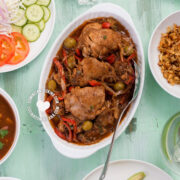This was our Abuela's secret for very colorful dishes, so learn how to make it and always keep some aceite de bija (achiote oil) at hand. This bija / achiote oil is a great shortcut to having your foods ready in a shorter time and adding that gorgeous color that grandma loved.
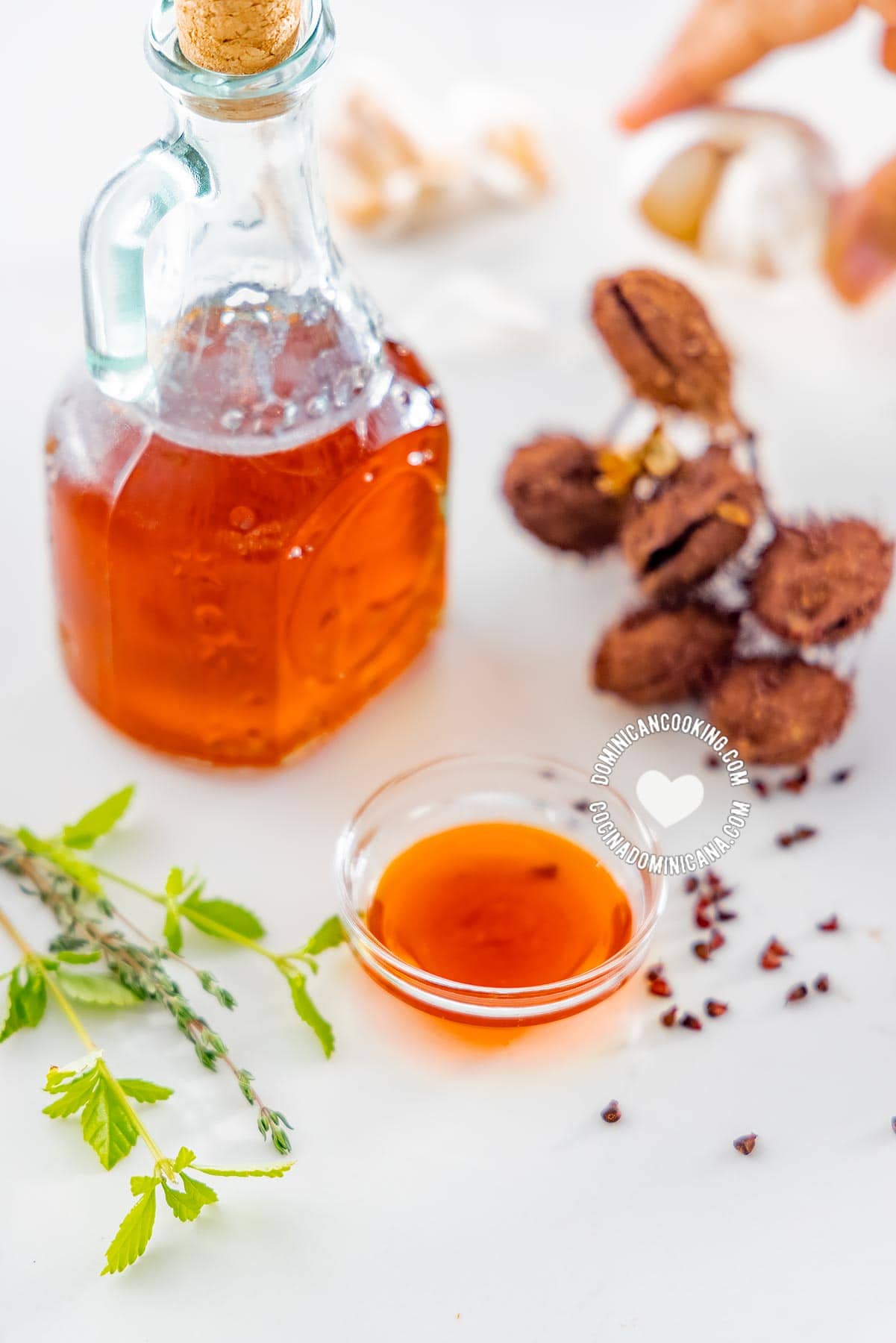
Why we ❤️ it
Bija is one of my favorite ingredients and I've used it in several recipes. It's the best way to add color to a dish without altering its taste. Bija is one of our signature spices; it's inexpensive and widely available in the Dominican Republic, as well as being a very ancient ingredient in our cuisine.
What is achiote / bija?
Bija is the fruit of the achiote tree --scientific name Bixa orellana-- which grows locally. The seeds of its alien-looking pods are used as coloring; it was used instead of tomato paste in pre-refrigeration times, as it has a very long shelf-life. Bija dominicana is commonly available as dry seeds, or bija / achiote powder.
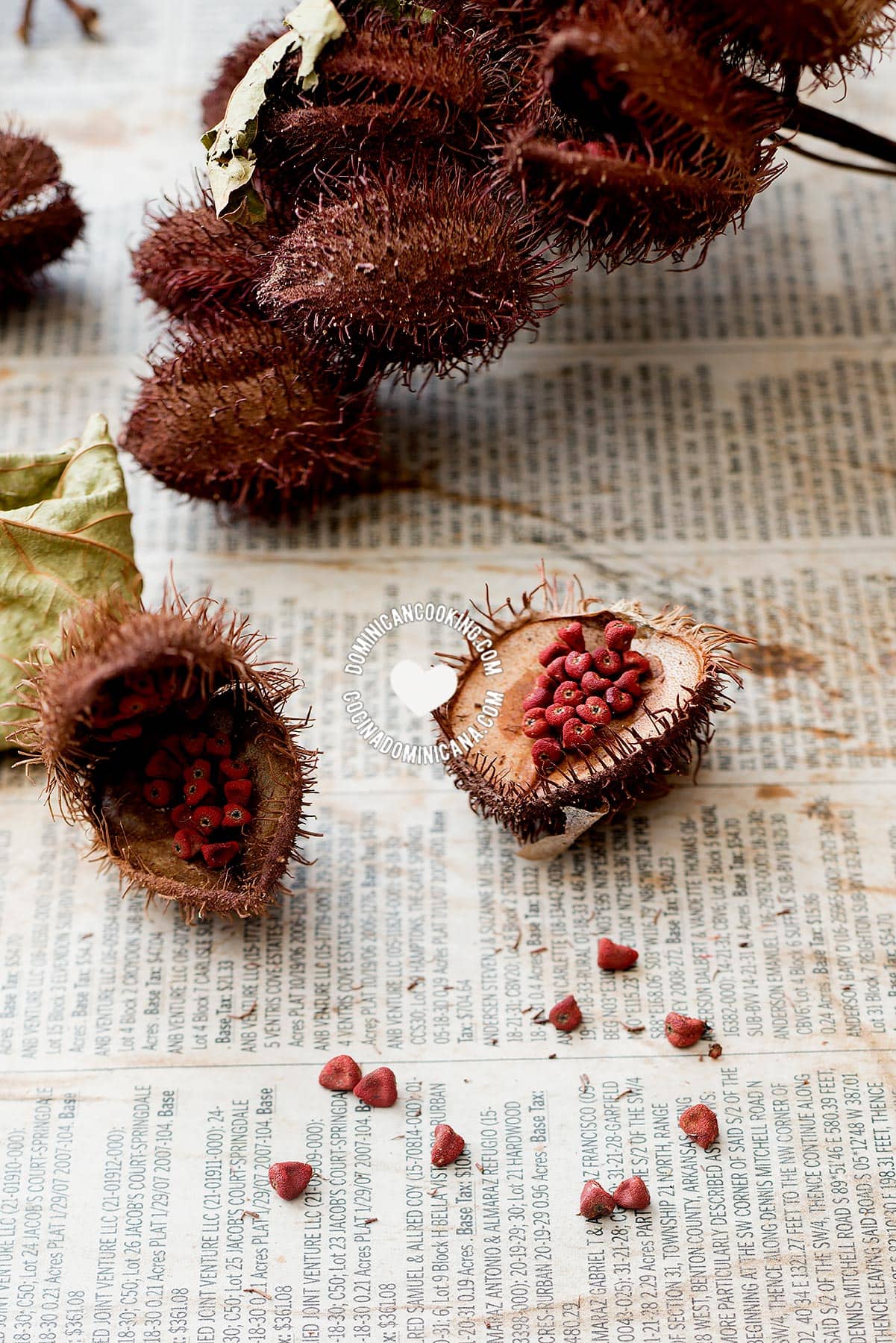
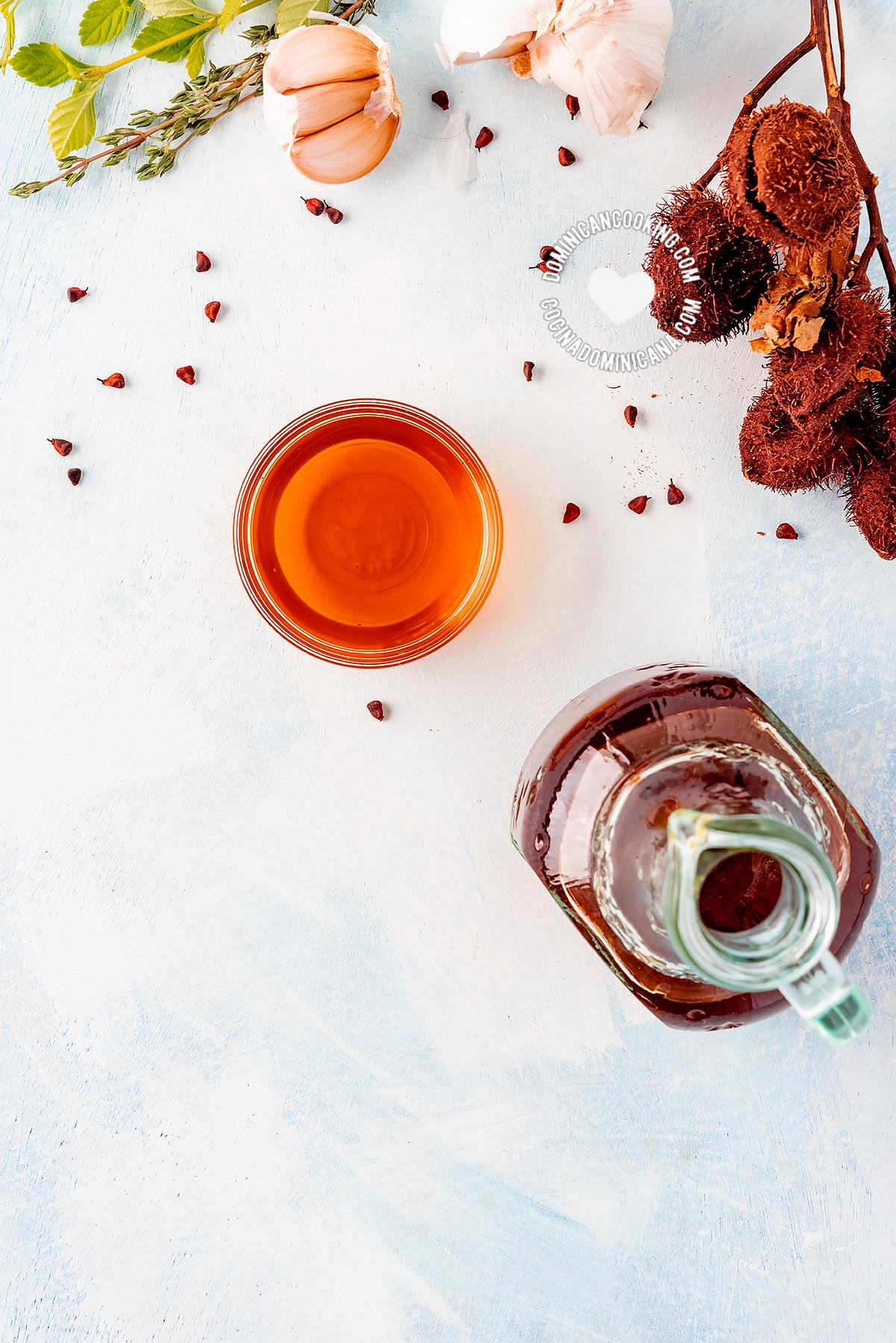
Bija / achiote and achiote oil
How to use it
Achiote can be used as a substitute for tomato paste to give color to our dishes. It is also made during the cooking process, as in this locrio de longaniza, but you can use it in our Locrio de pollo (Dominican arroz con pollo), and to give a deep orange color to our Pollo guisado (Dominican chicken) if you do not want to use the traditional method of burning the sugar.
Aceite de bija can also be used to improve the color of Pasteles en hoja, also the Pasteles de yuca ones.
How to store it
Store aceite de bija in a glass jar or bottle with a tight-fitting lid. I prefer to keep it refrigerated to make sure it lasts longer, in the fridge it lasts for months.
About this recipe
To make the oil, the annatto seeds are removed from the pods, then steeped or cooked over very low heat in cooking oil. Other ingredients like herbs, onions, garlic cloves, and oregano can be added to add flavor to it. Once the color is extracted we then strain it with a fine-mesh strainer.
My recipe is just taking the simple achiote oil and adding some extra flavors (oregano, thyme, and garlic). This makes it perfect to add to rice dishes and even makes some colorful scrambled eggs.

Recipe
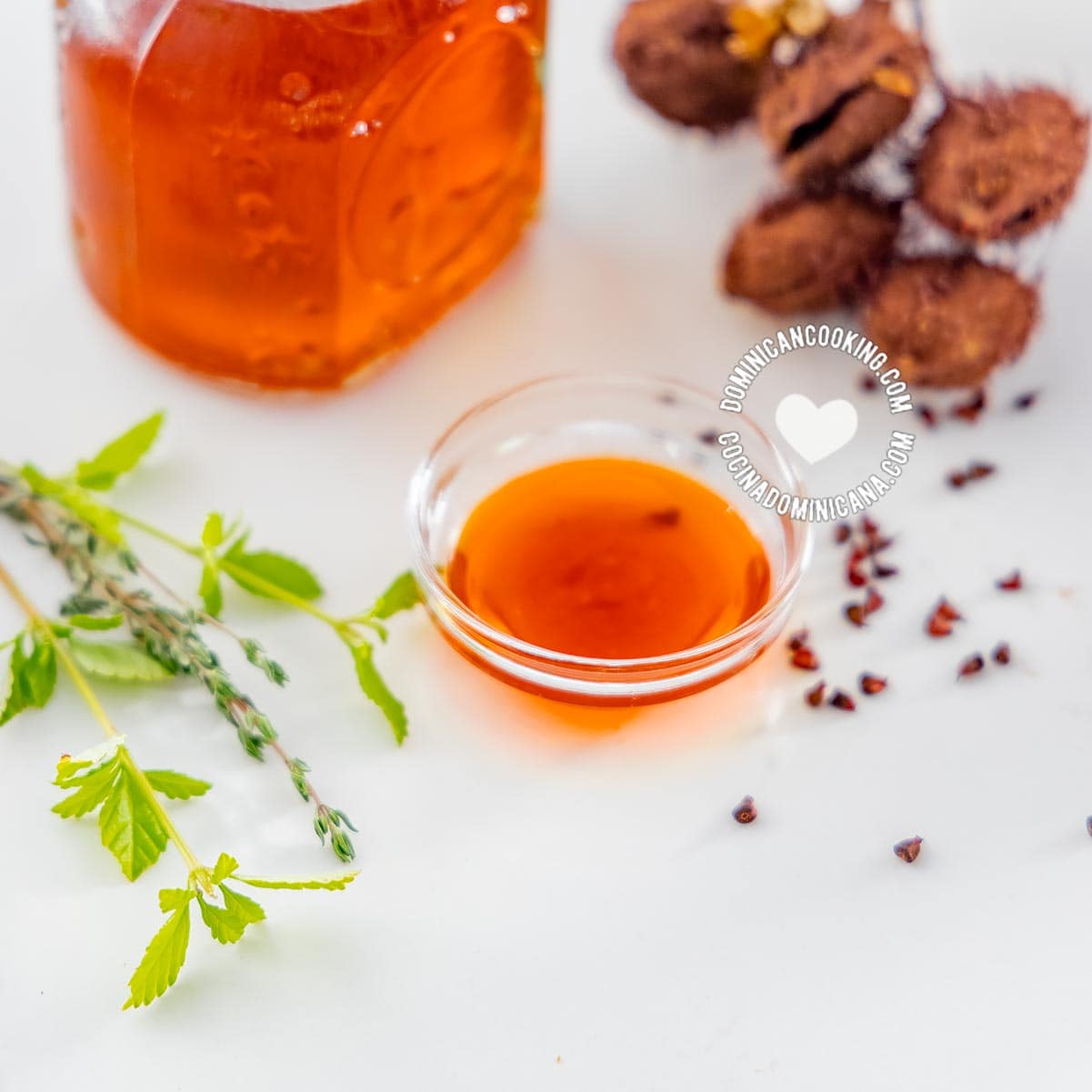
[Recipe + Video] Aceite de Bija (Achiote Oil)
Ingredients
Instructions
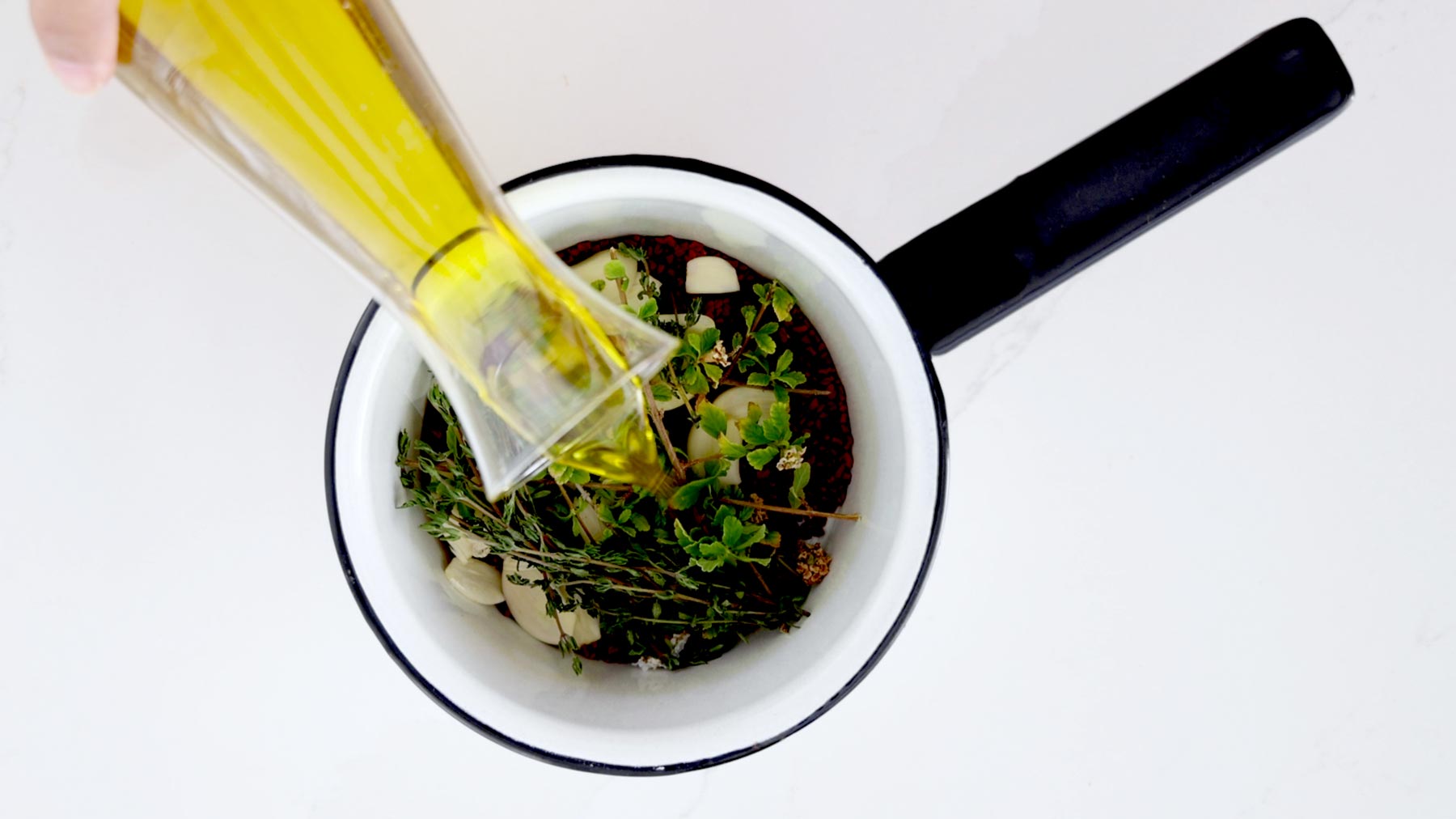 Pour the bija seeds into a small saucepan. Add garlic, oregano, and thyme.Pour in the oil.
Pour the bija seeds into a small saucepan. Add garlic, oregano, and thyme.Pour in the oil.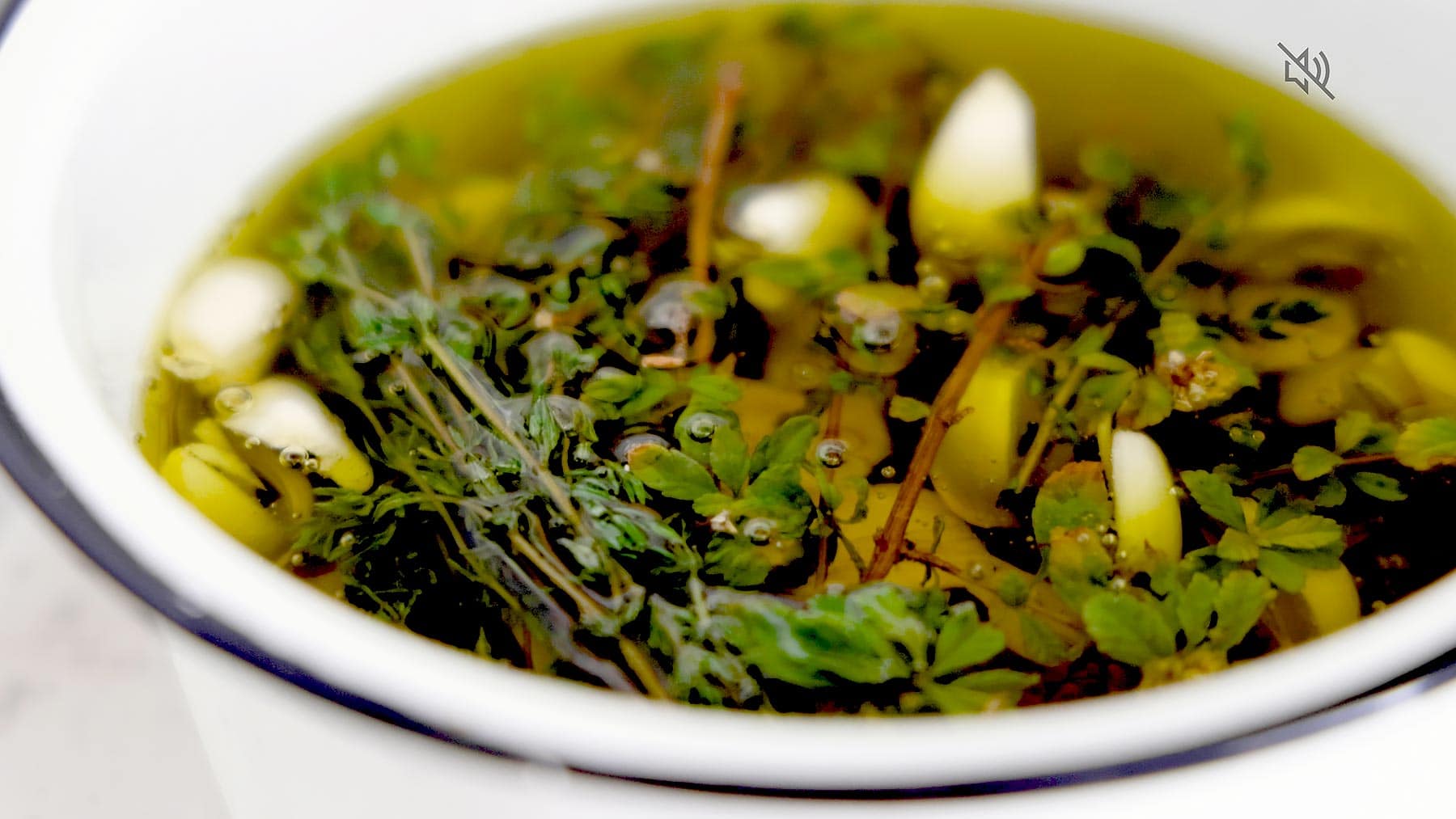 Heat on the stove at very low heat for one hour.Once the hour has passed, remove from the heat, and set aside to cool to room temperature. Sieve with a fine sieve to discard the solids.
Heat on the stove at very low heat for one hour.Once the hour has passed, remove from the heat, and set aside to cool to room temperature. Sieve with a fine sieve to discard the solids.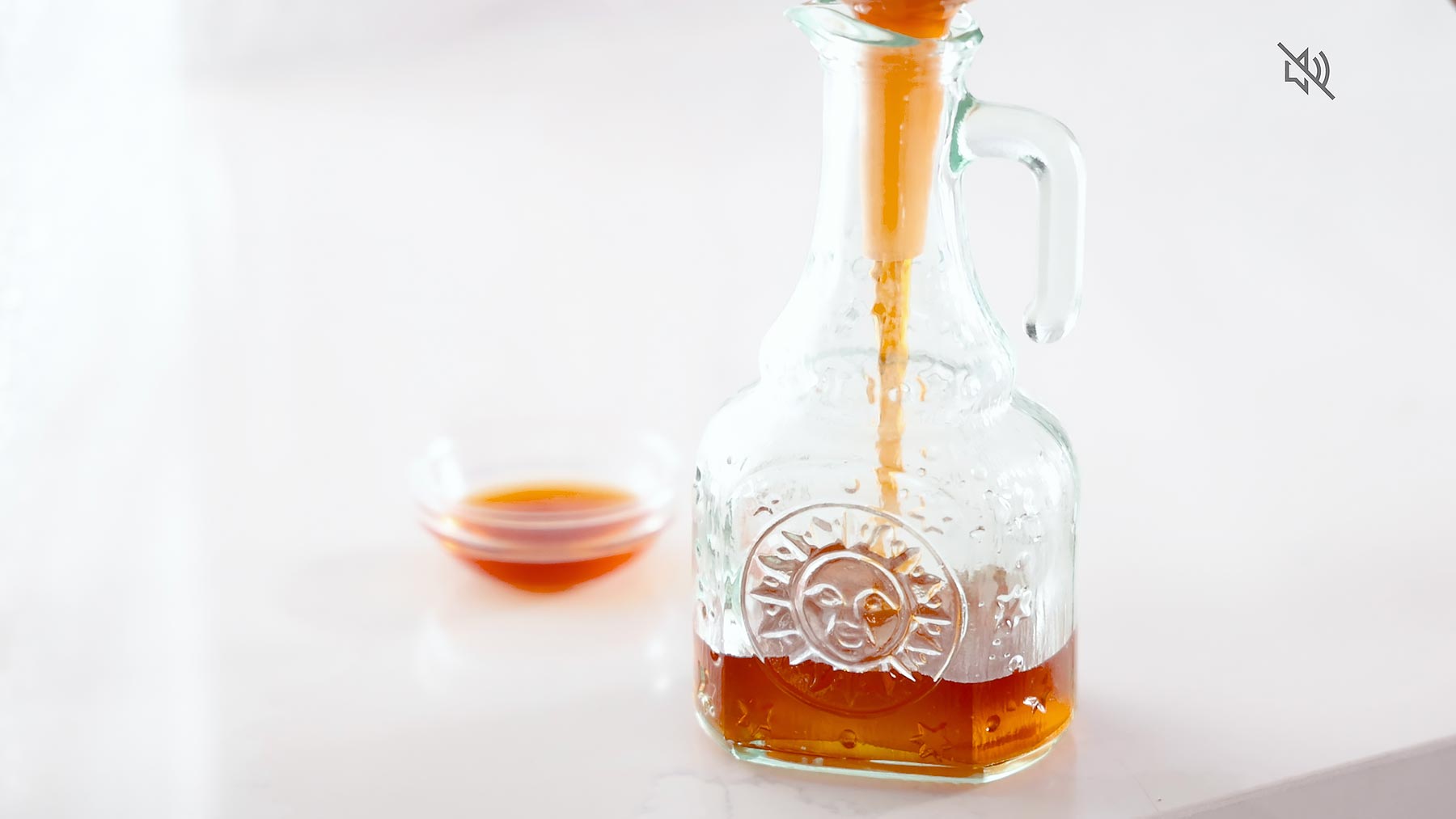 Pour into a clean bottle with a tight fitting lid, and store at room temperature. This has a long shelf life, but it's best used within the month.
Pour into a clean bottle with a tight fitting lid, and store at room temperature. This has a long shelf life, but it's best used within the month.
Video
Tips and Notes
Nutrition
Nutritional information is calculated automatically based on ingredients listed. Please consult your doctor if you need precise nutritional information.
Bija / achiote in English
Bija is also known as anato, and achiote in Spanish, and annatto in English, is used throughout the Caribbean, where it has come to be known as "the poor man's saffron [1]" (yeah, I know turmeric bears that title too, but it's hardly used around here).
History of bija
Before the first European stepped off the boat in 1492, bija was already being used by the Tainos (bija is a Taino word [2]). They used it mainly to paint their bodies a reddish tone for decorative purposes and as a mosquito repellent.
Bija is now one of the most widely-used natural food dye ingredients in the food industry and is generally considered very safe [3]. It's a common ingredient in several Latin countries.
FAQs
Annato oil is a bright orange oil made by steeping or cooking annatto seeds in cooking or vegetable oil. This oil is used for coloring foods.
It's preferable to make the oil from seeds, but if you have no achiote seeds available, you can make annatto oil by mixing the annatto powder with cooking oil, and letting it steep for several days. The color may not be as intense as with seeds.
Add enough vegetable oil to annatto powder to make into a paste and let it rest for 3 to 4 days. Use as a substitute for tomato paste.
Published Apr 14, 2021, and last revised



